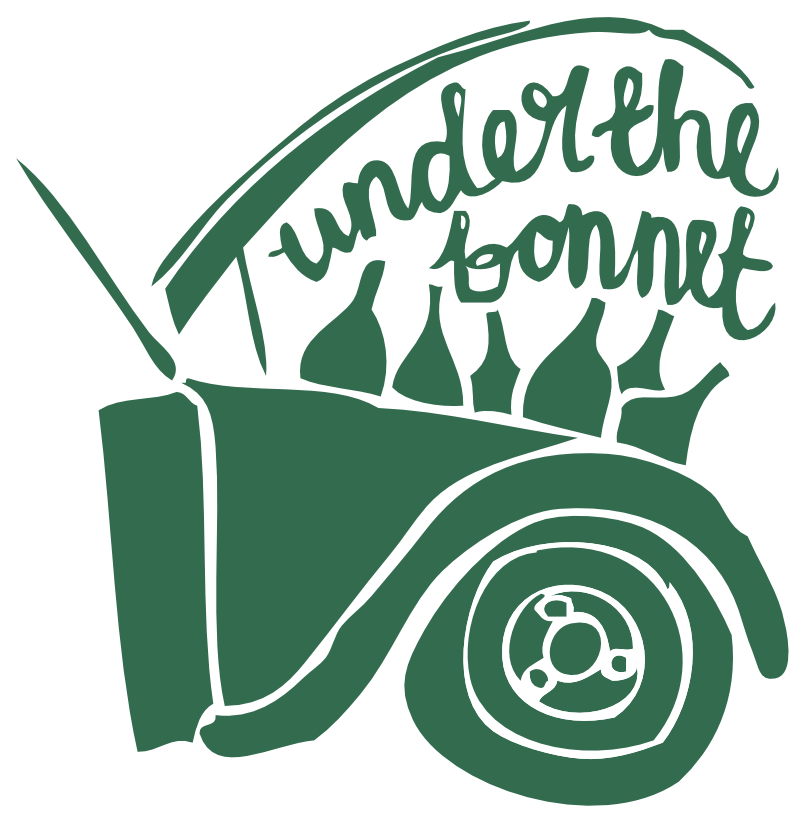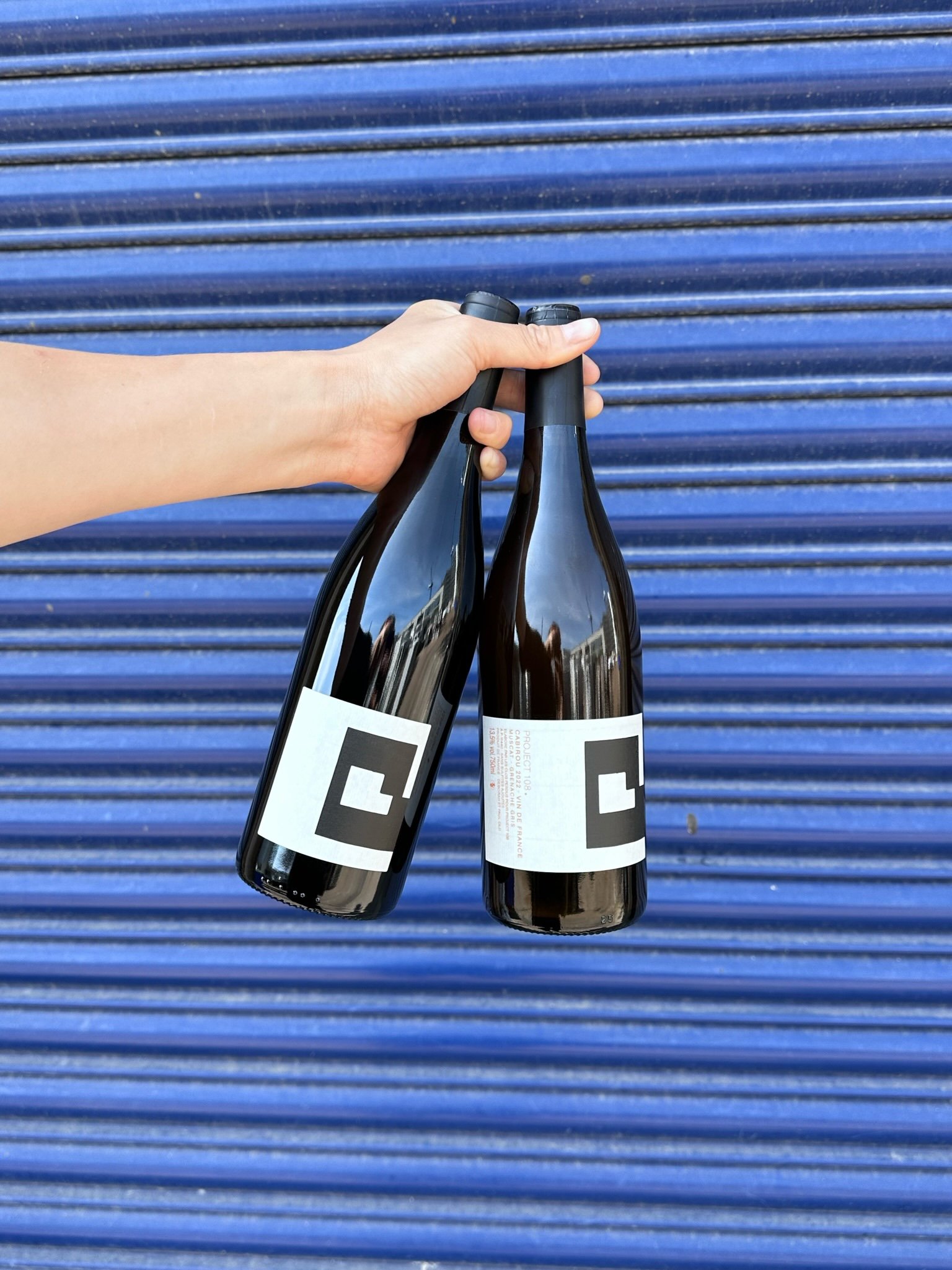Paul Old's Project 108 started life as a low-input workshop project, away from his more 'vision-driven' Les Clos Perdus: the 20-hectare biodynamic domaine he founded in the Corbières with Hugo Stewart 20 years ago.
Setting himself strict rules in the cellar for Project 108- zero sulphur additions, as hands-off with the winemaking as possible - it's since blossomed into an entire philosophy that is changing his approach to winemaking.
Paul now makes two Project 108 wines each year: a red that changes depending on what he's hoping to experiment with, and a macerated Muscat from a breathtaking parcel of old vines high in the hills of Tautavel.
Working biodynamically since the early 2000's, Paul's approach has continued to develop with climate change. They're now no-till, prioritising soil health and diversity.
In the cellar, the 108 rule is: "leave it" - Paul works as delicately and as hands-off as possible to allow the wine to make itself. As an evolving experiment, the choice of vessels, maceration times and elevage can change each year, but the idea remains pure: adding nothing, doing as little as possible for the best result.
The wines continue to be among our favourite releases each year: a chance to see where Paul's decisions - or lack of - have led him. Cabirou 2022 is a heady, layered expression of the wild hills, and the 2021 Rouge an invigorating experiment with younger vine Carignan & Mourvèdre, fresh, tense and evolving.
A conversation with Paul to discuss the process is a highlight on the calendar. An endlessly curious conversationalist, passionate and forthcoming with his knowledge. Below we discuss the new wines in detail, take a deep-dive into soil health, and Paul shares some thoughts on getting out of your own way.
Cabirou 2022 and Rouge 2021 are available now.
FOR WHOLESALE ENQUIRIES: HELLO@WINESUTB.COM
Hey Paul, how are you going? How are the vines looking?
Yes, I’m good thanks, we’re definitely looking at a third year of hydric stress for the vines, but we had thunderstorms last week and everything got a good dose of water, thankfully!
With the hydric stress and the way temperatures have been going down there, have you had to adjust with your approach in the vines?
Absolutely. We stopped working the soil a few years ago, so we've got lots of grass growing - which helps create airflow in the soil as each blade of grass is creating channels. Stopping working the soil hugely reduces that soil temperature, and of course, you maintain much more of whatever water you've been blessed with; there's much less evaporation.
Primarily, it's all about microbes in the soil, you need to get that root system established and protected. In recent years I think people have really realised it's not just soil: it's like the Amazon down there. There's so much happening, and if it's not happening, it can't sufficiently feed the vine.
We've actually been doing a bit of work with Professor Elaine Ingham - one of the world's foremost soil biologists - really looking at how to best develop that balance of bacteria and microbe populations. The key is to encourage aerobic bacteria and funghi in the soil. There's a huge difference between aerobic and anaerobic (no-oxygen) microorganisms. To put it simply, Aerobic bacteria are the good guys, anaerobic bacteria are really the breeding ground of disease for the plant.
Twice a year I go out with this very potent compost tea, we pump it full of air and it begins to ferment like crazy, the temperature rockets up, and you're really brewing microorganisms. That gets sprayed everywhere for this very high population of aerobic fungi, bacteria, and microorganisms.
Now we're almost entirely down to exclusively using compost teas and natural bio-stimulants for the vines - lots of algae based treatments. We've gotten to a point where we're using tiny, tiny doses of sulphur and haven't sprayed copper in three years. Keeping the soil copper free is vital. Increasing all that accessible nitrogen in the soil for the plants has become very, very important as we've faced a few consecutive years of hydric stress.
Despite being biodynamic for 20 years, this is really new ground for us, and it's completely fascinating.
Could you tell us a little about 2021 and the process for that year’s 108 Rouge that we’re now releasing?
2021 was the beginning of our hydric stress here. There was relatively high cropping, but it's still tricky. For the red, I wanted to try and play with a different side of the Carignan. There are two ways you can look at Carignan, either you pick nice and early for a real freshness - that you have to work with very carefully as you can easily overdo the green grippy tannins - or if you miss that acid, you have to wait until you have that more authentic phenolic maturity.
I'd already played with that in 18 and 19, the quite luscious, Mediterranean character and I decided I wanted to go for something a bit more tense, and nervy.
The 2021 red is two-thirds Carignan, from 10-year-old vines by the sea, and a third is from a parcel of neighbouring 11-year-old Mourvèdre. Just two vats, both filled as a co-ferment, a little layer of whole-bunch and mostly de-stemmed on top. I love the interaction between the two varieties - that's why I prefer to do a co-ferment rather than working in a blending style; it lets the varieties influence one another differently.
They're quite robust brothers, Carignan & Mourvèdre, they can really be pronounced, tannic beasts but treating them lightly, they play nicely. The only thing that might get tricky with the co-ferment, is Mourvèdre can get a little reductive and moody, needing aeration, and if you work the Carignan too much you really lose that ethereal Pinot-esque character and it dulls in the wine. So it's an interesting balance, I'd rather it errs on the side of moody and ethereal!
It's a very short maceration, just six days in total, then half of it was into stainless steel and the other half into clay pots, just to watch them evolve and react, before bringing them back together before bottling.
The thing I was interested in with working in this leaner way, is that you're relying less on a traditional phenolic maturity. If you've encouraged your root system to go deep, and the soil is healthy, there's a sort of maturity you gain that you might not taste off the vine; but you need to trust it will develop in fermentation; as it does, when the life is there.
Then 2022, another year of hydric stress? Could you tell us about the new Cabirou from that year, picked from that stunning parcel in the hills of Tautavel?
Yep, that was the second year of hydric stress, and we were really feeling it across the vines generally. Muscat seems to do quite well regardless, and vines are astounding at adapting to their environment. They'll always find a way it seems, unless there's absolutely zero water anywhere in the ground, which sadly does seem to be happening over in the Roussillon in 2023, it’s heartbreaking.
In early summer, we get a lot of our water from thunderstorms, but they can be incredibly localised - falling on your neighbour's parcel and not yours - so we gladly take whatever we can get!
In 2022 I picked the Muscat for Cabirou really early; there just didn't seem like there was anything to be gained by letting it mature any longer. It was racing along to maturity. There's this funny thing that happens with vines under stress: some of them are like good mothers and rush all their fruit along to maturity with their last push of energy. Other varieties like Carignan and Grenache just drop all the fruit and look after themselves.
Muscat is one of those that can really cope with stress and rushes everything along. It seems to ferment like gangbusters even when nitrogen is very low, I've heard people say if a ferment is struggling, chuck some Muscat in.
It's funny actually, reflecting on that now, all the pre-1960s vineyards we have all have a little scattering of Muscat in them regardless of the varieties planted… I wonder if that might be why, it historically acted as a little kick-starter to fermentations.
So Cabirou had no trouble! Blipped along through its ferment whilst everything else in the cave was a bit more laboured. This year I decided to do hardly any bâtonange, in contrast to the very bâtonange-d 2021. I wanted to observe what would happen if we let those gross lees rot a little bit. I really like it as a style.
This year it's another 70:30 whole-bunch maceration, the de-stemmed berries chucked on top. Just left to sit for about three weeks in total. Up there, there's Grenache Blanc neighbouring the Muscat, we pick for the Clos Perdus L'Extreme Blanc, and give it a very long, slow press. I leave it going overnight once we've filled the main tank. In the morning we've got about 20 litres of juice with great substance and matter, so I throw that into the Cabirou tank whilst it's midway through the maceration.
It was pressed back to stainless steel where it rested for about 11 months before bottling with no additions.
You're five years into Project 108 now which feels like a pretty nice milestone, what's one of the biggest things you've learnt so far?
As a winemaker, and I suppose as a creative; simply watching and following a process unfold can be so much more satisfying than one you're overthinking, or overworking.
When those expectations have gone out of the window, you can be much more open to how a wine might develop. And your ego is out of the process; you've finally gotten out of your own way! It's an important thing for anyone to learn: any form of sensitivity and intelligence, you don't have to hold onto it and suffocate it. You can stay open and playful, it'll be okay.
Also as this has gone on, it's that huge realisation with wine that nature is so much more complex than anything we can do. Farm as well as you can, look after your soil and your plants and really, just let it do its thing.






